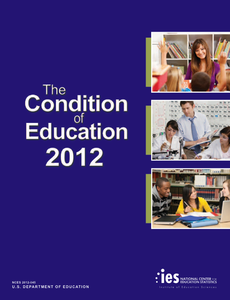LatinaLista — Just how bad the economy is depressing the job market for teenagers became crystal clear in a new report issued by the National Center for Education Statistics. The Condition of Education 2012 shows that high school student employment is at its lowest since 1990 — in 2010, only 16 percent of high school students were employed compared to 1990 when 32 percent had a job. The irony is that the level of extracurricular activities was virtually the same between the two target years.

The report shows that while students have made strides in education since 1990 — more students taking math and science courses, drop-out rates for blacks and Latinos have fallen and high school graduation rates have improved — there remain areas for major improvement.
Notably is the high school dropout rate. While the report documented improvement over a ten-year period, it also showed that students of color still drop out at higher rates than whites. According to the report, other disparities exist as well:
Among public school students in 2009–10, higher percentages of Hispanic (37 percent), Black (37 percent), and American Indian/Alaska Native students (29 percent) attended high-poverty schools than did Asian/Pacific Islander (12 percent) and White students (6 percent)
In 2011, some 32 percent of 25- to 29-year-olds had completed a bachelor’s degree or higher. From 1980 to 2011, the gap in the attainment of a bachelor’s degree or higher between Whites and Hispanics widened from 17 to 26 percentage points, and the gap between Whites and Blacks widened from 13 to 19 percentage points
Yet, while the report showed that while some things “appeared” to have changed, but were really still the same, other things emerged as new trends highlighting the true changes happening in the educational system:
- From 1999–2000 to 2009–10, the number of students enrolled in public charter schools more than quadrupled from 0.3 million to 1.6 million students. In 2009–10, some 5 percent of all public schools were charter schools.
- Private school enrollment in prekindergarten through grade 12 increased from 5.9 million in 1995–96 to 6.3 million in 2001–02 then decreased to 5.5 million in 2009–10. Some 10 percent of all elementary and secondary school students were in private schools in 2009–10, which was lower than the percentage in 1995–96 (12 percent)
- Between 1990 and 2010, the percentage of public school students who were White decreased from 67 to 54 percent, and the percentage of those who were Hispanic increased from 12 percent (5.1 million students) to 23 percent (12.1 million students).
- Between 2000 and 2010, enrollment rates increased for young adults ages 18–19 and adults ages 20–24, 25–29, and 30–34; students in these age groups are typically enrolled in college or graduate school.
- The percentage of public school students in the United States who were English language learners (ELLs) was higher in 2009–10 at 10 percent (or an estimated 4.7 million students) than in 2000–01 at 8 percent (or an estimated 3.7 million students.)
- In 2009–10, some 53 percent of public school districts had high school students enrolled in distance education courses. In these districts, there were over 1.3 million high school student enrollments in distance education in 2009–10, compared with 0.3 million five years earlier.
It’s a great irony that while educators are advancing their skills and methodologies to keep up with 21st Century educational demands that students of color would still be relegated to second-class treatment from these same school districts and educational systems that know where they are failing these students but have little willpower to change it.




